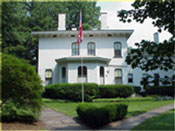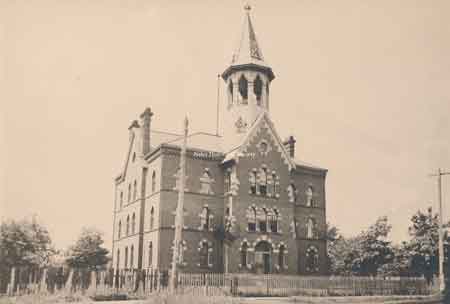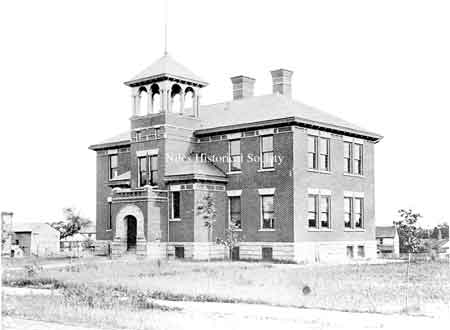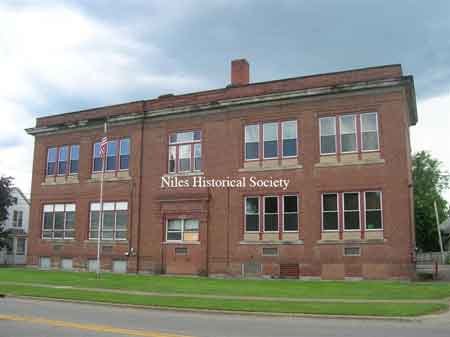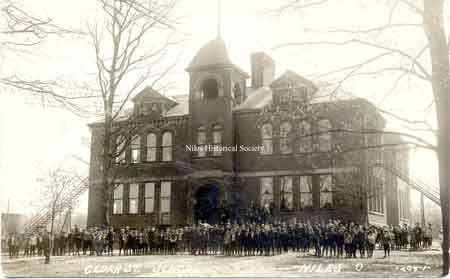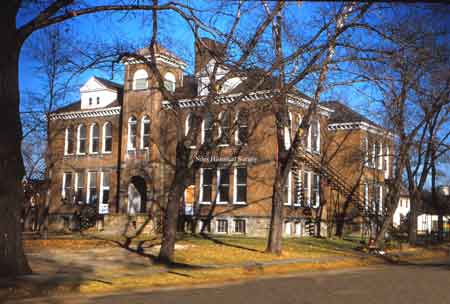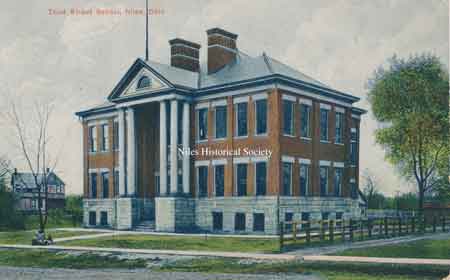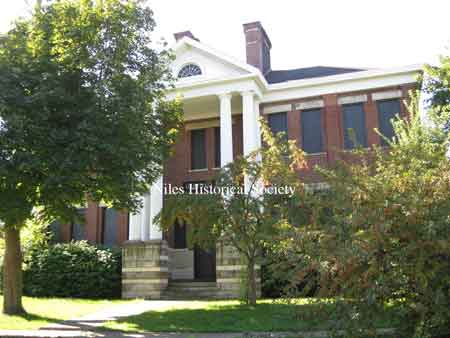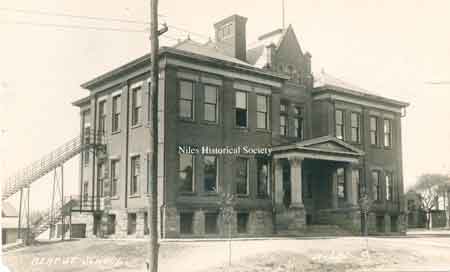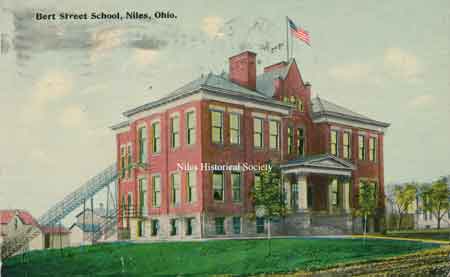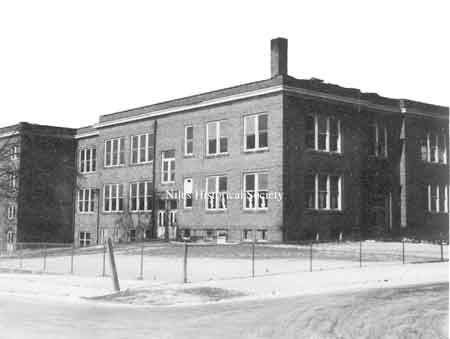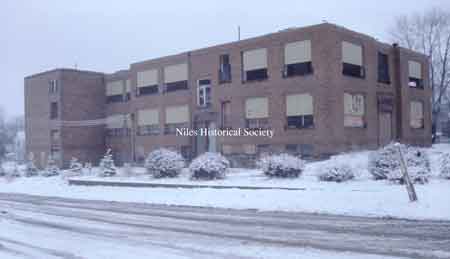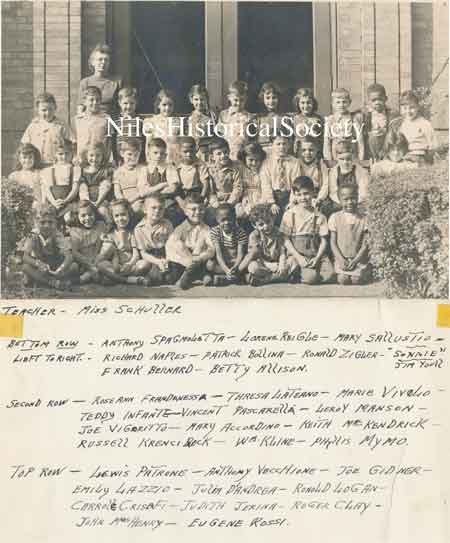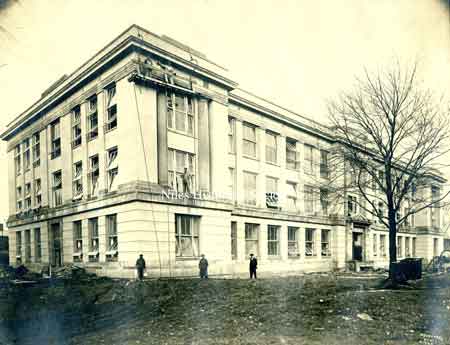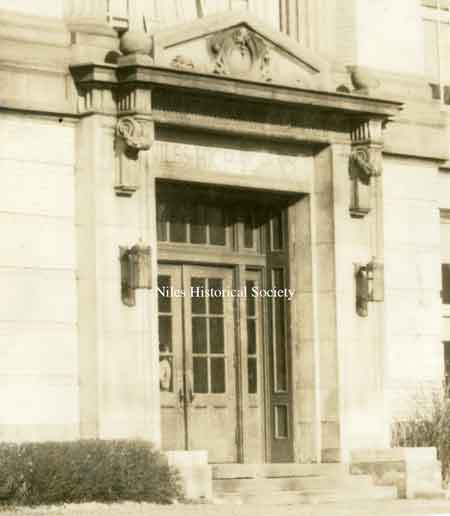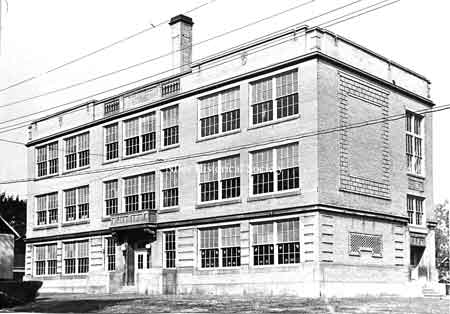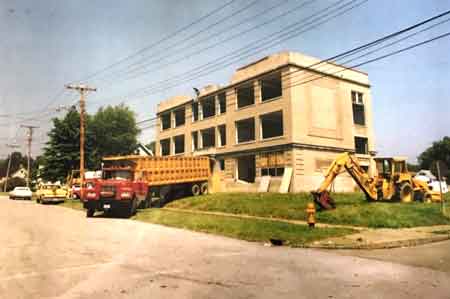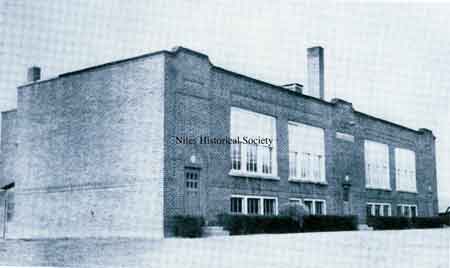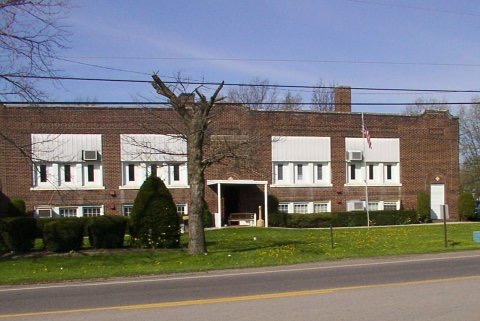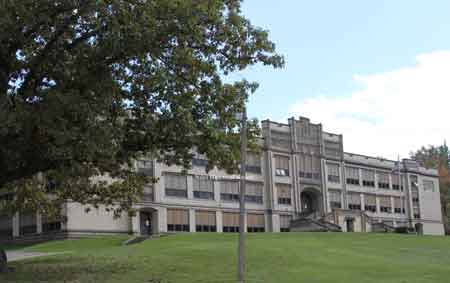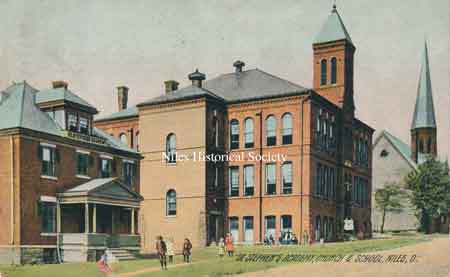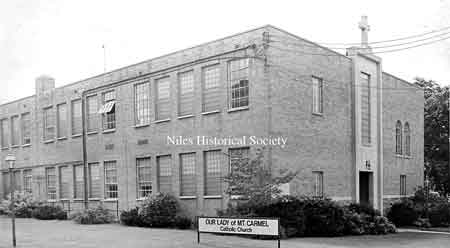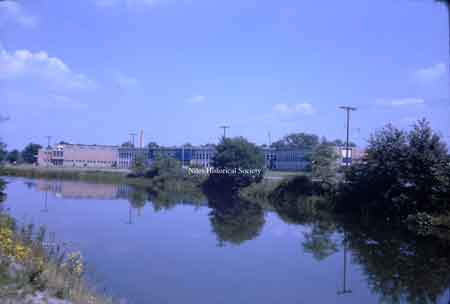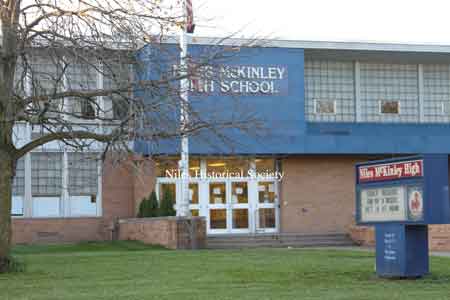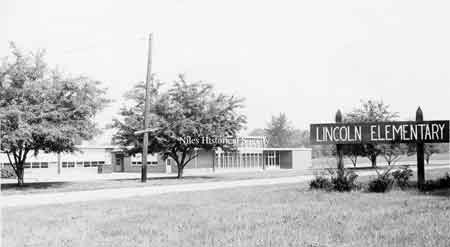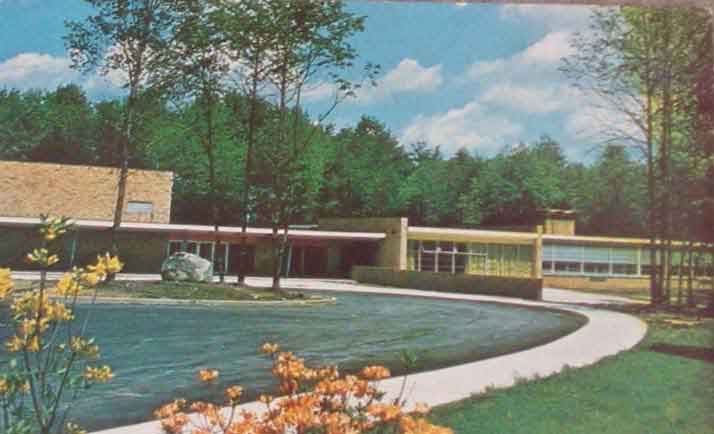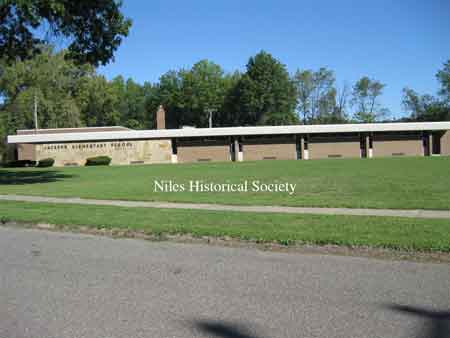| 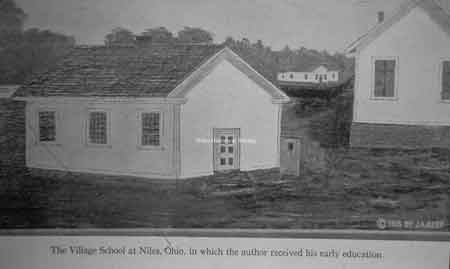
Little White School House
A drawing of the “Little White
School House” as it was referred to, was the first school
house built soon after the town was plotted in 1834. It was built
on the north side of what is now the Memorial grounds. It was
in that school that William McKinley, the future president, received
his first formal education.PO1.1169
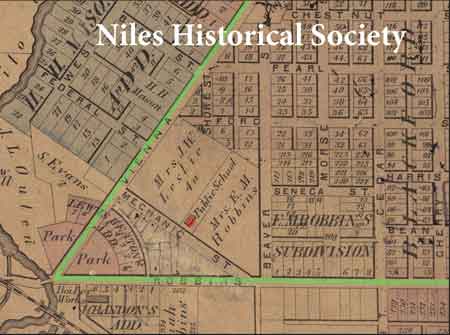
Location of Leslie Avenue School
In 1891 with the growing population,
it became necessary to construct a second school house near the
northeast corner of Leslie and Linden Avenues.
The frame building was renamed
Grant Street School in 1920. It has since been razed.
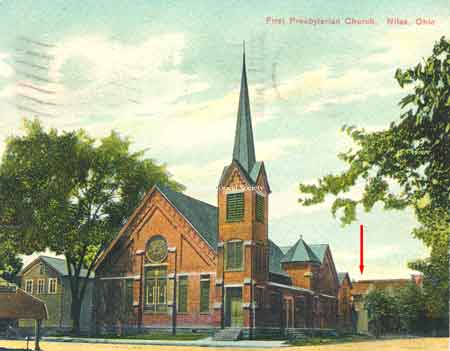
About 1834, the first public school,
a little white frame building, was erected on North Main Street
where the McKinley Memorial now stands. This school is the only
one shown on the map of 1844 and was located just at the rear
of the present Presbyterian Church.
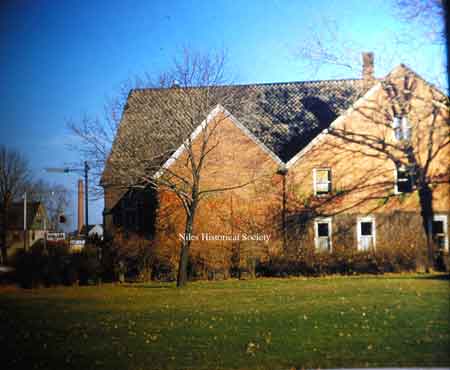
Back of First Presbyterian Church(1957)
where the first school in Niles was located. |
Niles
Schools Origins
Like other small frontier communities,
Niles struggled to establis and maintain a system of public schools.
Before James Heaton laid out the village and provided
land for the first public school, the first school at Heaton Furnace,
and perhaps the first in Weathersfield township, seems to have
been a small log cabin with greased paper windows, located south
of the river, on what is now South Main Street.
Historians write of another school
house on the high ground above the Heaton Grist Mill located along
Mosquito Creek, near the heart of the present city, where the
children of the settlement attended and where Herman Harmon,
a descendant of the early salt maker, was teacher. Two additional
schools seem to have been in use at various times in parts of
the present city before 1842. Quite early, a wood school house
seems to have stood near the corner of Leslie Avenue and Linden
Avenue. Although this part of the present city was not included
in the village of Nilestown before 1842.
About 1834, the first public school,
a little white frame building, was erected on North Main Street
where the McKinley Memorial now stands. This school is the only
one shown on the map of 1844 and was located just at the rear
of the present Presbyterian Church. The first parochial school
was organized by St. Stephen Church in 1868.
With the exception of 2 or 3 one
room schools located on Chestnut Street, Walnut Street, and two
more were reported on the South Side of Niles, it wasn't until
1871, that Niles was able to build a major school. Central (Union)
School, a three story brick structure, opened for classes May
22, 1871, with six teachers, including the principal. That same
year marked the appointment of the first superintendant of schools,
L.L. Campbell. Twenty years were to pass before additional
schools could be built, beginning with Leslie Avenue School on
the corner of Leslie and Linden Avenue( which is now a church)
in 1891.
Joseph Butler gives an interesting
description of early school life in the little white school house
in his book ‘Recollections of Men and Events’. “It
was” he wrote, “a small building erected of wood and
painted white. In it, the boys were seated on one side of the
room and the girls on the other; the seats being a long bench
which began on the side furthest from the door and extended down
each side and across the lower end with just enough of a break
to form a passage way from the door. This bench and a sloping
shelf to form the desk were made together. The teacher’s
desk occupied a raised portion of the floor at one end opposite
the door, and back of it was a blackboard decorated at times with
an impressive rod.” “In the center stood a large eggshell
cast iron stove …”
The usual punishment was to stand
in the center of the room, but occasionally the birch was used
… The teachers boarded around in the homes of pupils which
brought them in closer contact with pupils and parents and made
it easier for the parents to contribute their share to the support
of the school.
Books in those times were very highly
prized and scarce. They were well cared for and all members of
the family used the same books, as they were needed.
There were no tablets of white or yellow paper in the early days;
instead, small slates in wooden frames were used. The slates were
cleaned with a small cloth and the first sponges were coveted
possessions. There were no steel pens among the pupils and the
one owned by the teacher was considered a badge of importance.
When pens were used, which was not often, they were made of quills.
The art of making a quill pen correctly was considered quite an
accomplishment. There was no blotting paper even for those who
wrote much. Sand was used to dry the ink.
Teachers boarded in the homes of
pupils, bringing them in close contact with the parents, and enabling
the less affluent to defray a good part of their school costs
in this way. Books were scarce, highly prized, and usually well
preserved, since successive members of the family were expected
to use them.
With the exception of Central School
and the new McKinley High School (1914), all the public schools
were referred to by the name of the street they were located on;
for example Garfield school was originally referred to as Third
Street School.
In 1919, due to the efforts of Marion
Kelley, a newspaper reporter and member of the Board of Education,
the existing schools were renamed for U.S. presidents.
Built 1893, Warren Avenue School-Jackson
School; Built 1896, Cedar Street School-Lincoln School; Built
1905, Bert Street School-Monroe School; Built 1905, Third Street
School-Garfield School; Built 1911, Bentley Avenue School-Jefferson
School; Built 1919, Madison Avenue School-Roosevelt School. Built
1920, Harrison School in McKinley Heights; Built 1924, Washington
Junior High School; Built 1957, S.J. Bonham on East Margaret Avenue
was named after the previous school superintendant who promoted
the 1953 bond issue that allowed for the new school buildings
of the New McKinley High School, the new Lincoln School and the
new S.J. Bonham school. which were needed due to WWII 'Baby Boomers'. |


